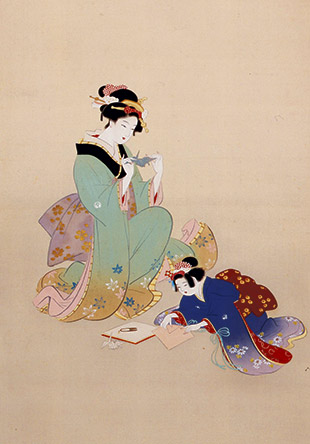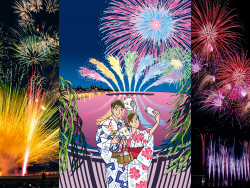
February 6, 2014
The Cute and the Curious
A kawaii history lesson at the Yamatane Museum
By Metropolis
Originally published on metropolis.co.jp on February 2014

When was the last time you thought seriously about the aesthetic roots of Pikachu?
If this sounds ridiculous, maybe that’s because kawaii—the subject of the current exhibition at Hiroo’s Yamatane Museum of Art—fundamentally is. Yet this show is an excitingly original chance to survey in detail the history of an idea that many would only see as a modern Japanese phenomenon.
The love of what is cute, tiny, a little bit weak (and a little bit crazy) all at once may not, in fact, be such a 21st century thing. We learn in the show that the Heian period Pillow Book (circa A.D. 1000), a famous collection of musings by a court aristocrat, included a list of “Adorable Things,” naming babies and young sparrows. The Yamatane is one of the best museums in Japan in its collection of 20th century nihonga and contains substantial pieces by older Edo period artists—making this a rare chance for a deep, historical survey of the culture of cute.
If there is one thing that lets this exhibition down, it is the choice of organizing themes, particularly at the show’s start. Why begin exploring a topic with so much potential psychological, societal and broader cultural complexity to be probed with a section entitled “Depictions of Children.” In apparently deadpan sincerity, the description informs us that children have long been considered kawaii—which must be the same virtually everywhere you go.
The following section, “A Paradise of Adorable Animals,” does little to improve the situation given the eminent universality of the fact that animals can be cute. Rather than inviting close scrutiny of how—or if—such images of cuteness have altered with history, the blanket-style headings encourage us to view the works in an unhelpfully generalized way.
However, within this structural dynamic some truly varied and interesting pieces are there, and by some of Japan’s finest artists. The high point of the show comes near the end in “Tiny, Dreamy and Humorous: What’s ‘Kawaii’?” that breaks out from merely categorizing subject matter into the actual mentality behind this fascinating word.
In a piece like Uemura Shoen’s Girls Folding Paper Cranes, for example, two figures are poised with impossibly dainty aplomb in the middle of a game. One is reduced to a tiny size compared to her companion, and the billowing shapes of their kimono make them seem marshmallow-like against the rich, deep space of the folding screen. Shoen has taken a scene of courtly elegance and dressed it up in pastel overload: the women become two puff-shaped toys in the artist’s own organizational game.
It’s exciting to think in this way that some of the quirky—or even crazy—designs of Kitty-chan, Pikachu and friends could find their origin in the dry, witty line of a nihonga ink artist. Even further, the exhibition suggests that broader scenes of daily life could themselves be imbued with the roots of what is today called kawaii.
It’s in the way of rendering these totally quotidian scenes emphasizing the vast humor within their small details—the tilt of a head, the delicate padding of a figure’s walk in a piece like Itou Jakuchu’s Fushimi Dolls—that we can perhaps trace the roots of some of the exploding energies of modern day kawaii forms. How far is it from this quick-stepping, quirky satire of gesture to the acrobatic dances of AKB48 or the bubble hearts flying all over the place in purikura machines?
Thanks to the more conceptual spin of this final section, the richness of the whole show’s varied ancestors to modern kawaii is not lost. This remains a fascinating collection of master works by some of Japan’s most prominent artists. If it only had some more original curation towards the beginning, and perhaps an absolutely contemporary component for comparison—where is Takashi Murakami?—it would be much stronger. Nonetheless, this is an important show for anyone who wants to understand the roots of a huge portion of Japan’s visual landscape today.







